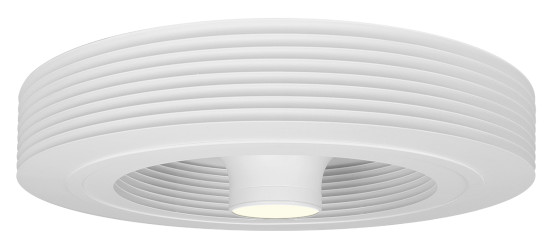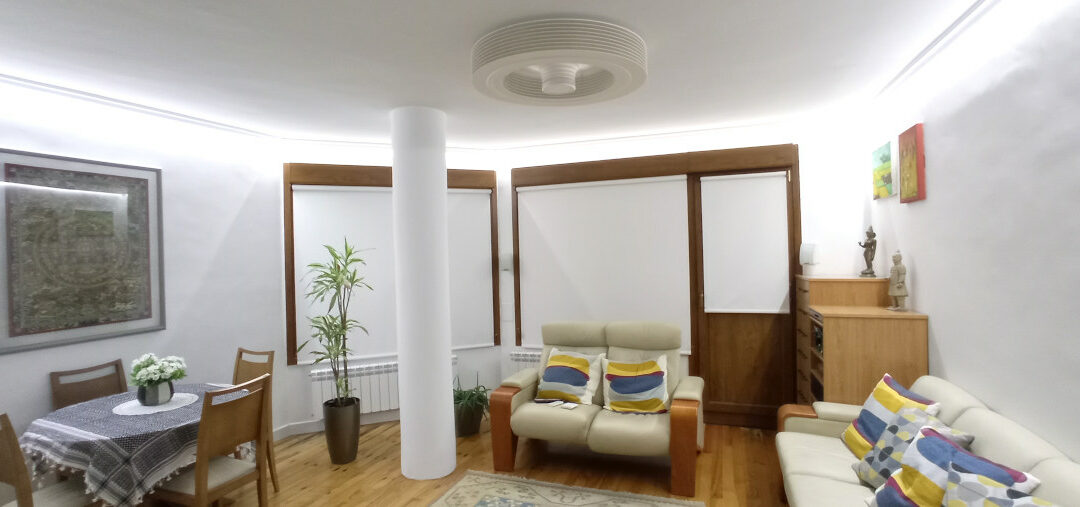At a time when the cost of a KWH is constantly rising, it’s worth asking how much a ceiling fan consumes.
If we want a quick answer, we can assume that a ceiling fan will consume between 10 and 70 Watts for a high-performance, high-quality ceiling fan.
It should be noted that the energy consumption of a ceiling fan in both winter and summer will be much lower than that of an air-conditioning system.
You should also bear in mind that for high ceilings, the use of a ceiling fan as a destratifier in winter comfort will break up the layers of temperature and make significant savings on heating (by avoiding having to heat the ceiling).
In detail, the power consumption of a ceiling fan (and its running costs). This will depend on several parameters:
A – Fan type
There are several types of fans, including :
- Ceiling fans (which cover a larger surface area than other types of fan).
- Free-standing fan (covers a medium surface).
- Table fans (cover a very limited surface area.
B – Engine quality
Better-quality DC motors consume around 2 times less energy than AC motors, which are cheaper to produce but more energy-intensive to run.
DC motors are also more reliable over time.
C – Speed of rotation
Quality fans generally have 6 speeds (like EXHALE or SAMARAT).
Speed 1 is the slowest speed, consumes the least energy and is the quietest.
Speed 6 is generally the most powerful and the “noisiest” (although the noise generated by a ceiling fan is very limited).
It should be noted that intermediate speeds (3-4-5 out of 6) often offer excellent energy efficiency (perceived performance compared to consumption). In fact, as with a car, maximum speed is often synonymous with “over-consumption” to achieve extreme performance, whereas intermediate speeds offer better energy efficiency.
D – Summer or winter comfort use
For summer comfort, during the hottest hours of the day, the ceiling fan generally turns faster (speeds 3-4-5-6 out of 6) to generate air speed (to evacuate perspiration from the skin).
The Givoni or Woods diagrams show a direct relationship between air speed and the drop in temperature felt by users of the room.
In this case, a ceiling fan will consume between 20 and 50 watts (still a long way from the consumption of an air-conditioning system (800 to 1500 watts, i.e. 30 to 40 times more).
This low power consumption has made the ceiling fan a must-have in many countries around the world where temperatures are high (South-East Asia, USA, Oceania, Africa, South America, etc.).
For winter comfort, the focus is no longer on air speed but on energy efficiency, i.e. obtaining a comparable result using the least possible resources. We will therefore keep to low speeds such as speeds 1 & 2, maximum 3.
For winter comfort / destratification, the consumption of an air blower will be very low: around 2 to 8 watts.
Added to this are the heating savings, often of the order of -30%, due to the better distribution of warm air that stagnates in the ceiling.
E – Number of hours of use
The power consumption of a ceiling fan varies according to the number of hours it is used.
- Calculating consumption :
- To estimate your annual consumption, use the following formula :
- Annual consumption (in kWh) = fan power × number of hours per day × number of days in use / 1,000
- To estimate your annual consumption, use the following formula :
Here is an illustration of the operating cost of an EXHALE bladeless fan:
| Speed | Consumption (W/h) | Cost Watt/hour | Per day (€) | Per month (€) |
|---|---|---|---|---|
| 1 | 4 | 0,0002516 | 0,02415 | 0,7246 |
| 3 | 9 | 0,0002516 | 0,05434 | 1,6303 |
| 6 | 50 | 0,0002516 | 0,3019 | 9,05 |
Even at today’s electricity prices, an EXHALE bladeless fan running at maximum speed 7 days a week, 24 hours a day would cost 9 euros a month – twice as much as a light bulb!
In summary, with a maximum consumption of 50 watts, ceiling fans (including exhale) are a very energy-efficient solution for both winter and summer comfort.
Ceiling fans are easy to install, can be used all year round (summer, winter and between seasons), consume little energy and consume much less than air conditioning.

Exhale, the first vortex-effect bladeless ceiling fan
Are you a professional? We have a dedicated area for you.
Find Exhale Fans Europe on Linkedin

